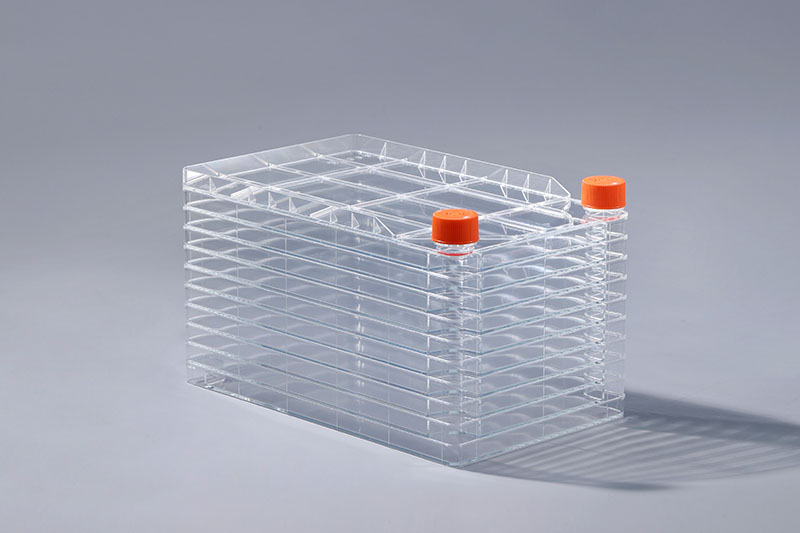تشير تقنية زراعة الخلايا على نطاق واسع إلى تقنية التحكم في الظروف البيئية بشكل مصطنع وزراعة الكائنات الحية الدقيقة المفيدة والخلايا الحيوانية والنباتية على نطاق واسع بكثافة عالية. إنه أساس عدد كبير من الخلايا الجديدة التي تم الحصول عليها عن طريق إعادة التركيب الجيني واندماج الخلايا والتقنيات الأخرى في الإنتاج الصناعي مثل الغذاء والدواء. مصانع الخلايا هي مواد استهلاكية شائعة الاستخدام في زراعة الخلايا على نطاق واسع.
تشتمل الطبقات الشائعة لمصانع الخلايا على طبقة واحدة ، وطبقتين ، و 5 طبقات ، و 10 طبقات ، و 40 طبقة ، وما إلى ذلك ، وهي بشكل أساسي مناسبة لثقافة الخلايا الملتصقة. لتوسيع نطاق التدريب الخاص به ، يمكن تحقيقه عن طريق زيادة عدد الطبقات. يمكن أن يؤدي أسلوب التدريب هذا إلى تعظيم الاستفادة من المساحة الكبيرة وتوفير مساحة المصنع وتوفير القوى العاملة والموارد المادية.
في الصناعة ، تُستخدم مصانع الخلايا على نطاق واسع في الإنتاج الضخم للقاحات أو الأجسام المضادة أحادية النسيلة أو صناعة الأدوية. تشمل الخلايا الحيوانية الشائعة التي تم تربيتها على نطاق واسع الخلايا الليفية لأجنة الدجاج ، وخلايا الكلى الهامستر الأولية وغيرها من الخلايا الأولية ، وكذلك الخلايا ثنائية الصبغيات البشرية ، وخلايا CHO ، وخلايا فيرو. تُستخدم هذه الخلايا على نطاق واسع في إنتاج اللقاح ، وإعداد الأجسام المضادة أحادية النسيلة ، والإريثروبويتين ومجالات المنتجات الأخرى. إنها ثقافة خلوية فعالة قابلة للاستهلاك ويفضلها العديد من مؤسسات البحث العلمي وشركات الأدوية.
In addition, large-scale cell culture through cell factories can reduce the number of cell culture devices and reduce the risk of cell contamination. It is an efficient cell culture consumable and is favored by many scientific research institutions and pharmaceutical companies.
The FAI climbed 5.9 percent year-on-year in the first 11 months of 2018, quickening from the 5.7-percent growth in Jan-Oct, the National Bureau of Statistics (NBS) said Friday in an online statement.
The key indicator of investment, dubbed a major growth driver, hit the bottom in August and has since started to rebound steadily.
In the face of emerging economic challenges home and abroad, China has stepped up efforts to stabilize investment, in particular rolling out measures to motivate private investors and channel funds into infrastructure.
Friday's data showed private investment, accounting for more than 60 percent of the total FAI, expanded by a brisk 8.7 percent.
NBS spokesperson Mao Shengyong said funds into weak economic links registered rapid increases as investment in environmental protection and agriculture jumped 42 percent and 12.5 percent respectively, much faster than the average.
In breakdown, investment in high-tech and equipment manufacturing remained vigorous with 16.1-percent and 11.6-percent increases respectively in the first 11 months. Infrastructure investment gained 3.7 percent, staying flat. Investment in property development rose 9.7 percent, also unchanged.
 English
English



















































